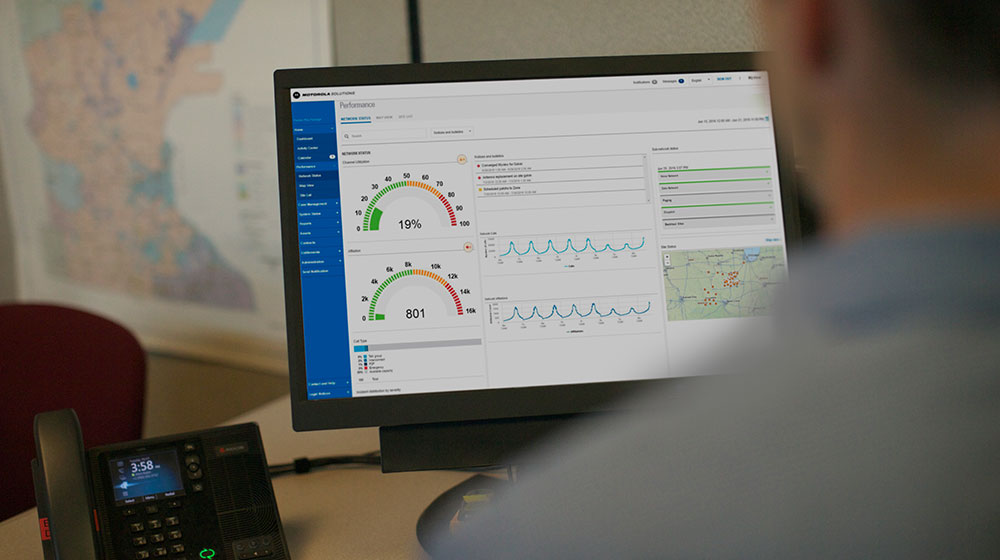Peer call routing in NG9-1-1
Have you ever thought about how implementing NG9-1-1 is like peeling back the layers of an onion? Each layer gives more information on how all the pieces eventually come together.
The topic of this blog, peer call routing, impacts all the layers of Next Gen call routing – IP infrastructure, ESInet, NGCS, (Next Generation Core Services), location-based routing, multimedia capabilities and cybersecurity. Peer call routing is a cornerstone for feature-rich, efficient PSAP-to-PSAP communications.
The goal for the peer call routing service providers is to ensure a PSAP (Public Safety Answering Point) can conference or transfer a call to another PSAP on a different call routing network, where the receiving PSAP has the ability to obtain the caller’s location and other data associated with the 9-1-1 call. Let’s look at what this means and how it impacts your NG9-1-1 call routing.
Who’s on first?
It is not a new concept to conference and transfer 9-1-1 calls between PSAPs. 9-1-1 call routing service providers have been enabling inter-PSAP call conferencing and transfer between PSAPs, based on TDM (Time Division Multiplexing) technology and Session Initiation Protocol (SIP), for decades. But as more NGCS and ESInets (Emergency Service IP Networks) are deployed across North America we are removing the barriers of TDM and other dedicated connectivity technologies. NGCS opens the door for a richer communication experience, including functionality like having the caller’s location be a part of the communications exchange and using Emergency Incident Data Object (EIDO), to exchange incident data.
For PSAP-to-PSAP communications to occur, whether national or regional, peer call routing service provider networks must be interconnected and speaking the same language.
One of the challenges faced by the industry is that peer call routing service providers are moving at different speeds with different technology capabilities. In addition, there are no requirements placed on call routing service providers to adopt the NENA i3 standard for PSAP-to-PSAP communications based on any established timelines.
Today, a minority of PSAPs in North America are interchanging calls using a NENA i3 formatted approach. Motorola Solutions believes in peer call routing using the NENA i3 standard. Our approach is to reach a mutual agreement, commonly referred to as the Network-to-Network Interface (NNI), with the peer call routing service providers. These interconnection agreements govern the business relationships between the peer call routing service providers and define responsibilities and what happens in cases of failures, events or if changes are required between the systems, as well as what features, protocols and payloads exist and how they are managed.
Considerations
As you move forward with your NG9-1-1 call routing project, keep these points in mind.
Focus on what you need to accomplish from an operational call flow perspective.
- Drive your decisions based on the operational results you want and measure the outcomes by those results.
- Try not to get distracted by technology details because they will vary from provider to provider, and are constantly evolving. And for our industry, this evolution will continue to move at a fast pace.
- Speak to your vendors about your needs, i.e., wanting to convey the caller’s location when transferring a 9-1-1 call to another agency or sharing calls with another agency so they retrieve the incident related data related to a given call.
Understand the functionality the agencies in your given ecosystem require.
- Identify the likely call flows or use cases that your agency shares with your neighbors so you can articulate this to your call routing provider. Remember, there may be different outcomes if you and your neighbors are not operating at the same level of technology and/or standards alignment. For example, if conferencing is required and your PSAP supports the NENA i3 format and EIDO, but the neighboring PSAP cannot receive EIDO, the functionality within each PSAP will be different. This is a normal part of migration to NG9-1-1, and should not be viewed as a barrier to NG9-1-1 adoption.
- It is important to understand how a legacy PSAP, served by a call routing provider that is either operating on legacy or transitional technology or has a different interpretation of the standards, will impact you and your neighbors’ operational callflows.
- New features can break or degrade existing features. Call handling and CAD are good examples. The data and associated formats the call handling systems use to communicate with the call routing networks will evolve and change. Subsequently, the data output from call handling to CAD, in many cases, may change. Collaborate with the call handling and CAD service providers so you understand, in advance, how changes will impact your transition to NG9-1-1.
Take action on the influence you have with call routing service providers; collaborate with neighbors.
- You have influence over your call routing service provider but not necessarily over your neighbors who likely have different call routing service providers, agency affiliations, and may be seeking different operational outcomes.
- Find out what your neighbors seek and discuss outcomes together. The more you and your neighbors collaborate, the stronger the opportunity to influence each other and your respective call routing providers with the features and capabilities you seek, potentially making the transition to NG9-1-1 smoother.
The NENA i3 standard focuses on the end state. It’s up to us, together, to determine specific steps we need to take for the desired outcomes for your agency and your neighbors’.
Here are other blogs with more information on Next-Gen call routing:
- What PSAPs say about their Next Gen Call Routing
- Next Gen Call Routing – the FCC Report and Order
- Solving the problem – delivering calls based on location
For more information on Motorola Solutions Next Gen Call Routing, go to motorolasolutions.com/callrouting.




